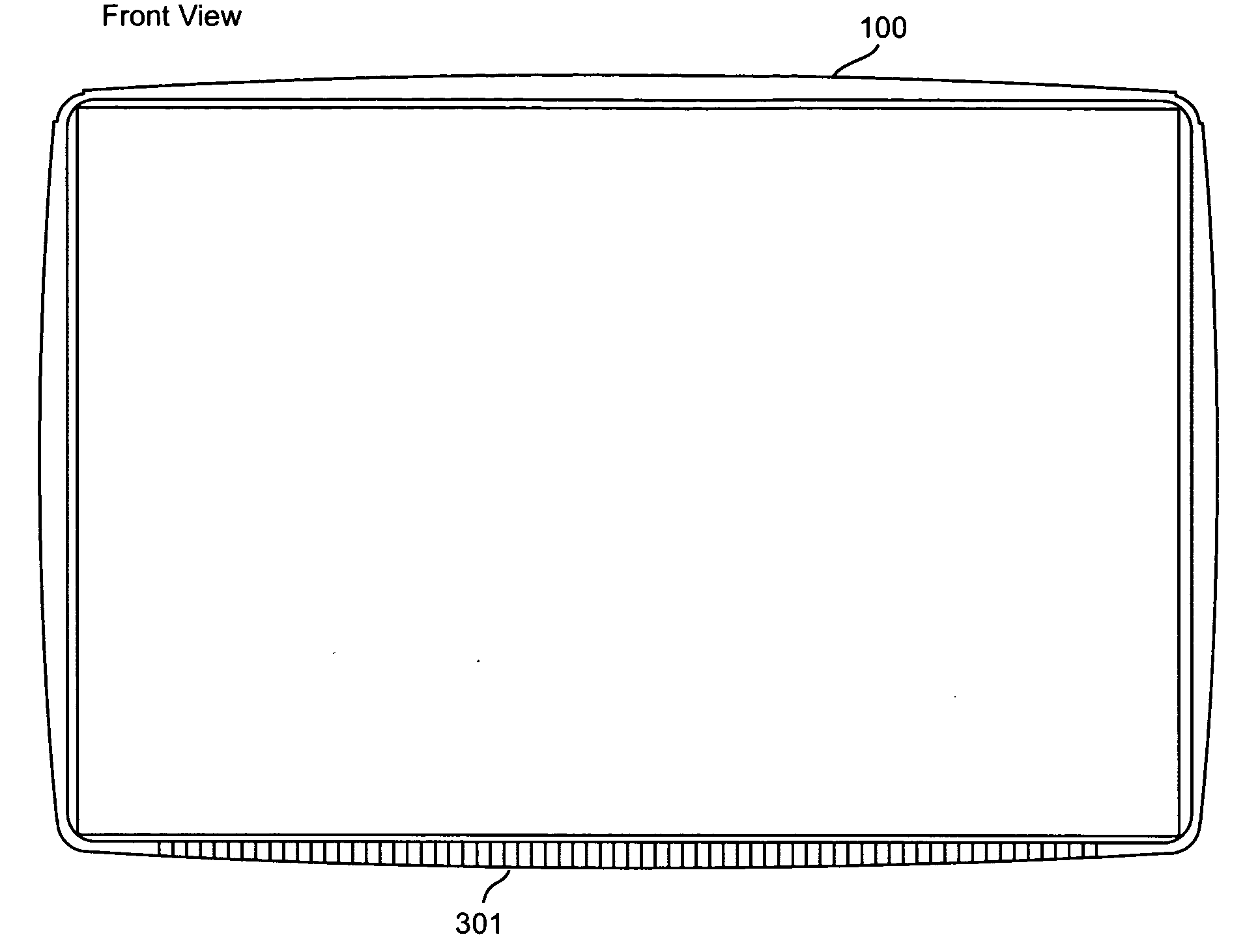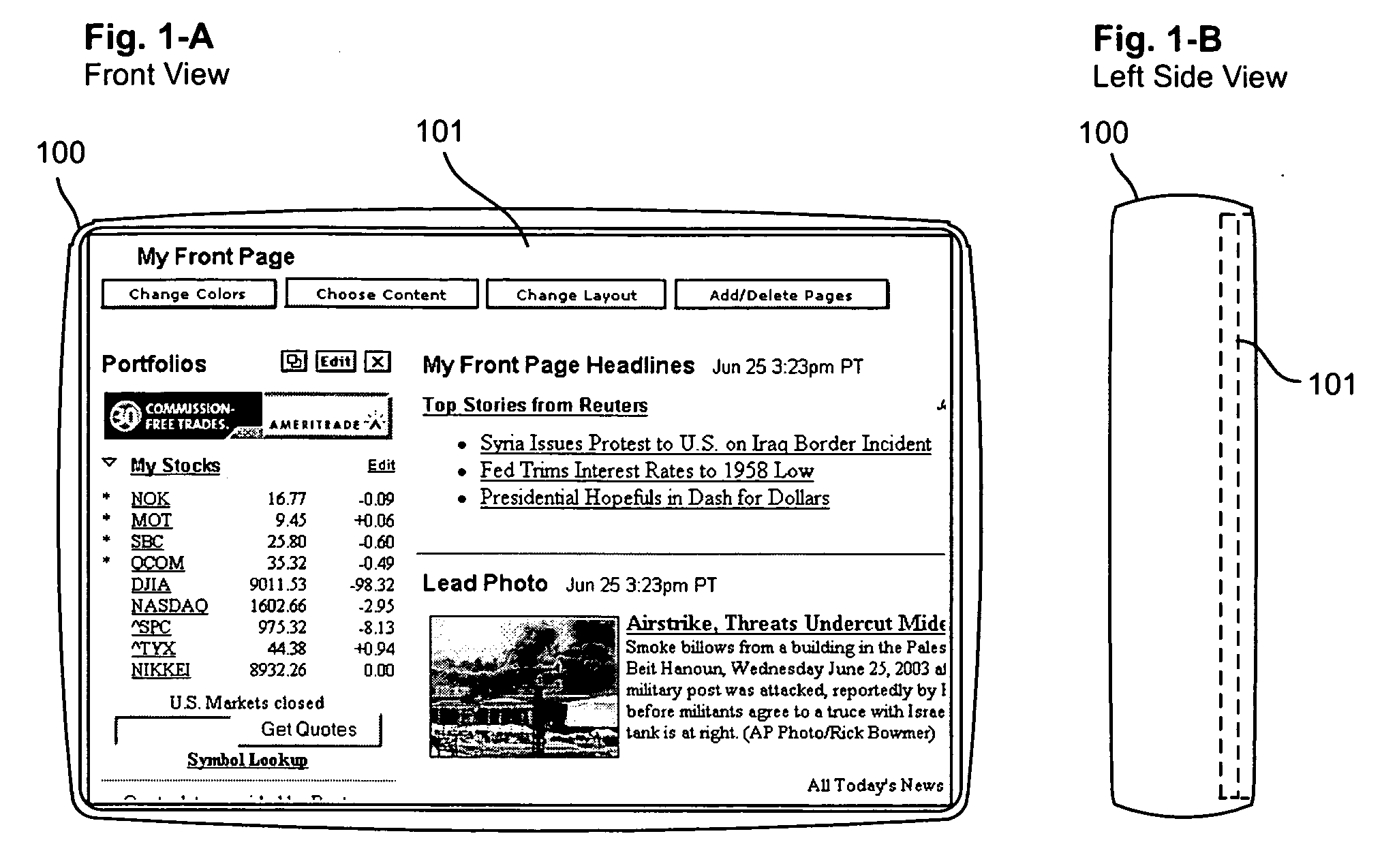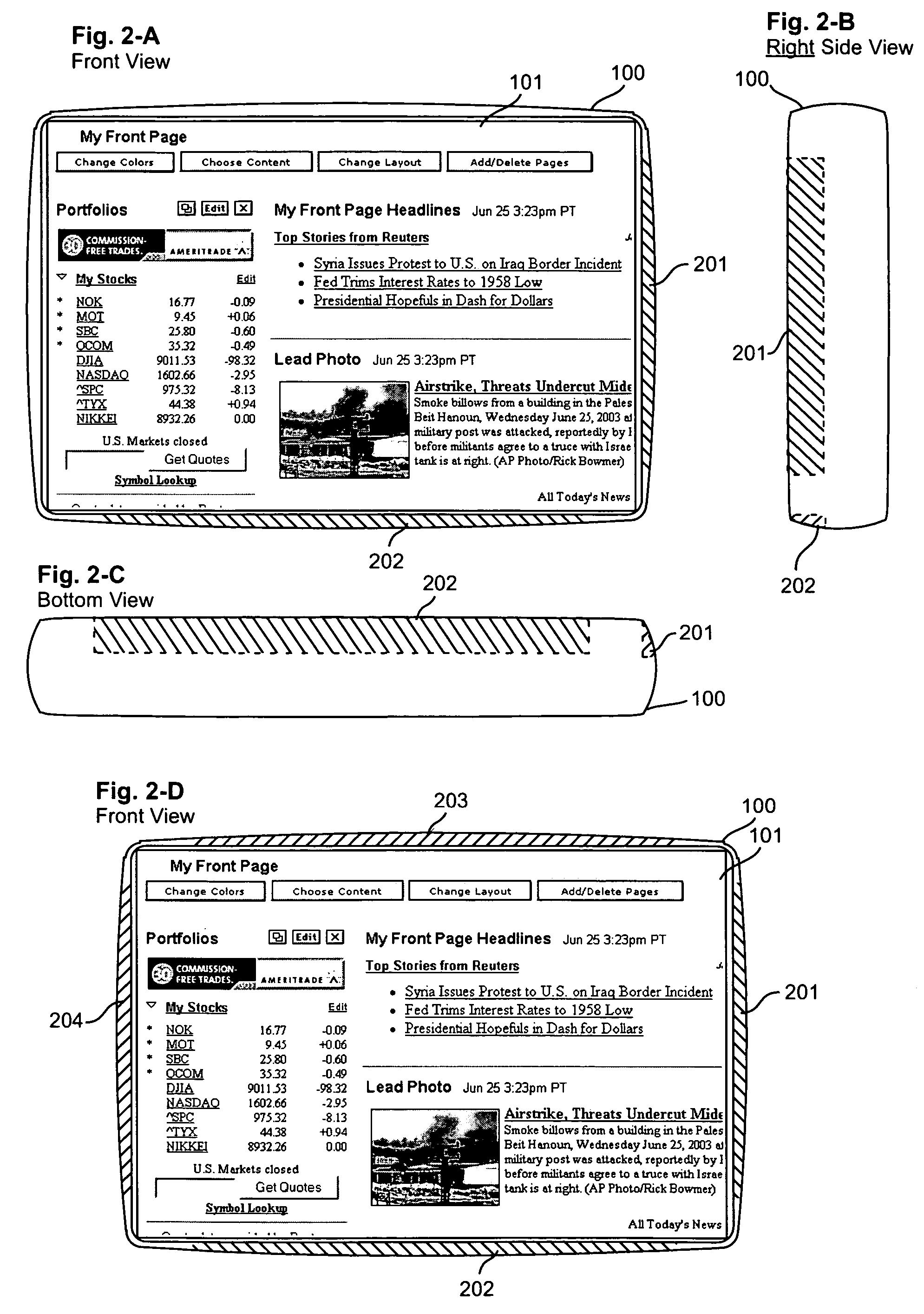System and method for a portable multimedia client
a multimedia client and multimedia technology, applied in the field of handheld electronic devices, can solve the problems of clunky, tedious, scraping, and the “mobile web” experience of today's conventional pocket-size mobile devices (e.g. pdas and smart-phones), and achieve the effect of reducing the cost of mobile web services, and reducing the adoption rate of mobile web services
- Summary
- Abstract
- Description
- Claims
- Application Information
AI Technical Summary
Benefits of technology
Problems solved by technology
Method used
Image
Examples
Embodiment Construction
[0062] The present invention is best understood by reference to the detailed figures and description set forth herein. Embodiments of the invention are discussed below with reference to the Figures. However, those skilled in the art will readily appreciate that the detailed description given herein with respect to these figures is for explanatory purposes as the invention extends beyond these limited embodiments.
[0063] The embodiments of the present invention incorporate novel, carefully balanced combinations of pixel count ranges, pixel density ranges, and overall device size, as well as man-machine-interface innovations, so as to optimize the Web experience on pocketsize devices while keeping the devices relatively affordable.
[0064] Some “counter-common-wisdom” aspects of the present invention's display-related innovations are addressed first. The carefully balanced combinations of pixel count, pixel density, and device size introduced by the present invention allow users to see...
PUM
 Login to View More
Login to View More Abstract
Description
Claims
Application Information
 Login to View More
Login to View More - R&D
- Intellectual Property
- Life Sciences
- Materials
- Tech Scout
- Unparalleled Data Quality
- Higher Quality Content
- 60% Fewer Hallucinations
Browse by: Latest US Patents, China's latest patents, Technical Efficacy Thesaurus, Application Domain, Technology Topic, Popular Technical Reports.
© 2025 PatSnap. All rights reserved.Legal|Privacy policy|Modern Slavery Act Transparency Statement|Sitemap|About US| Contact US: help@patsnap.com



